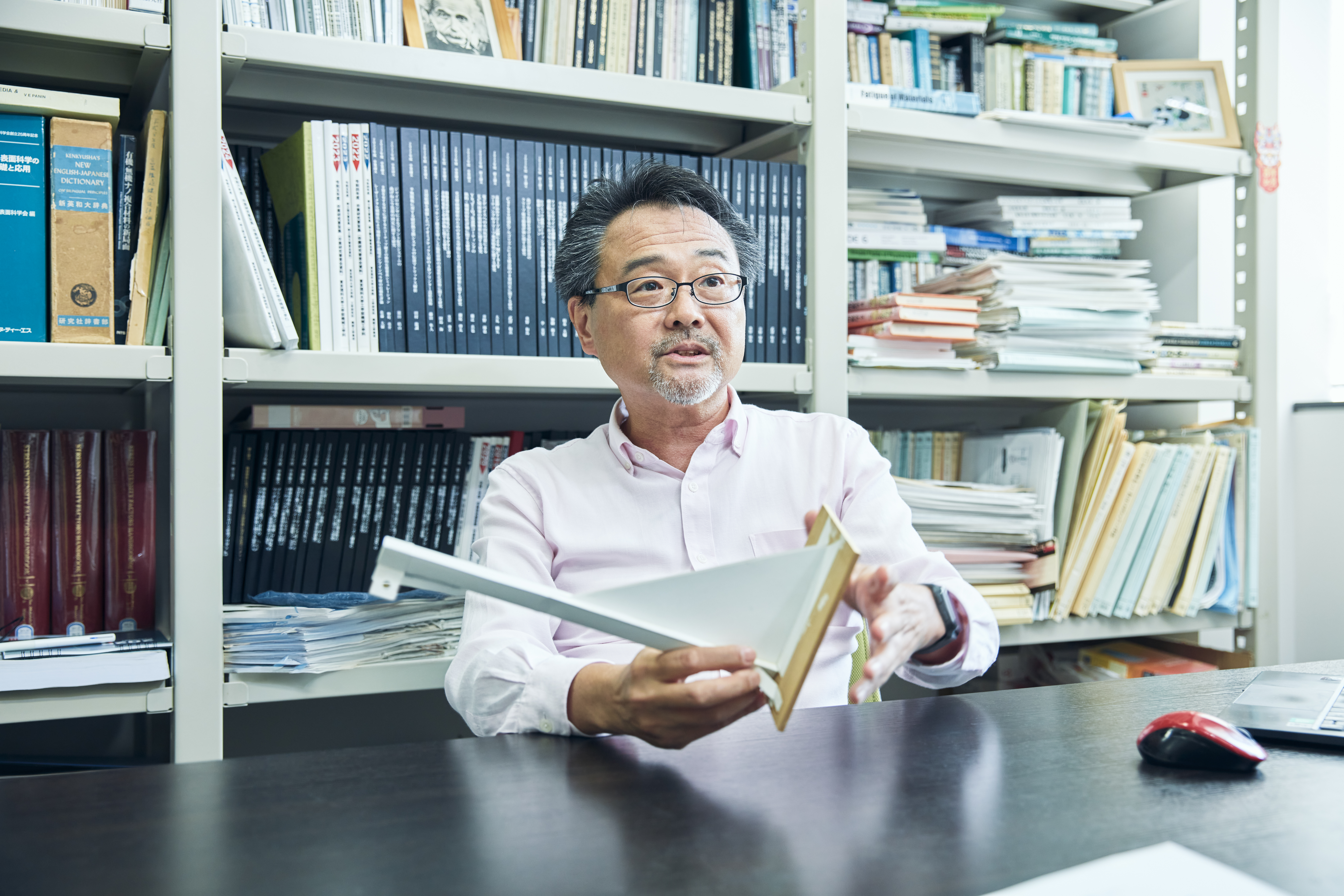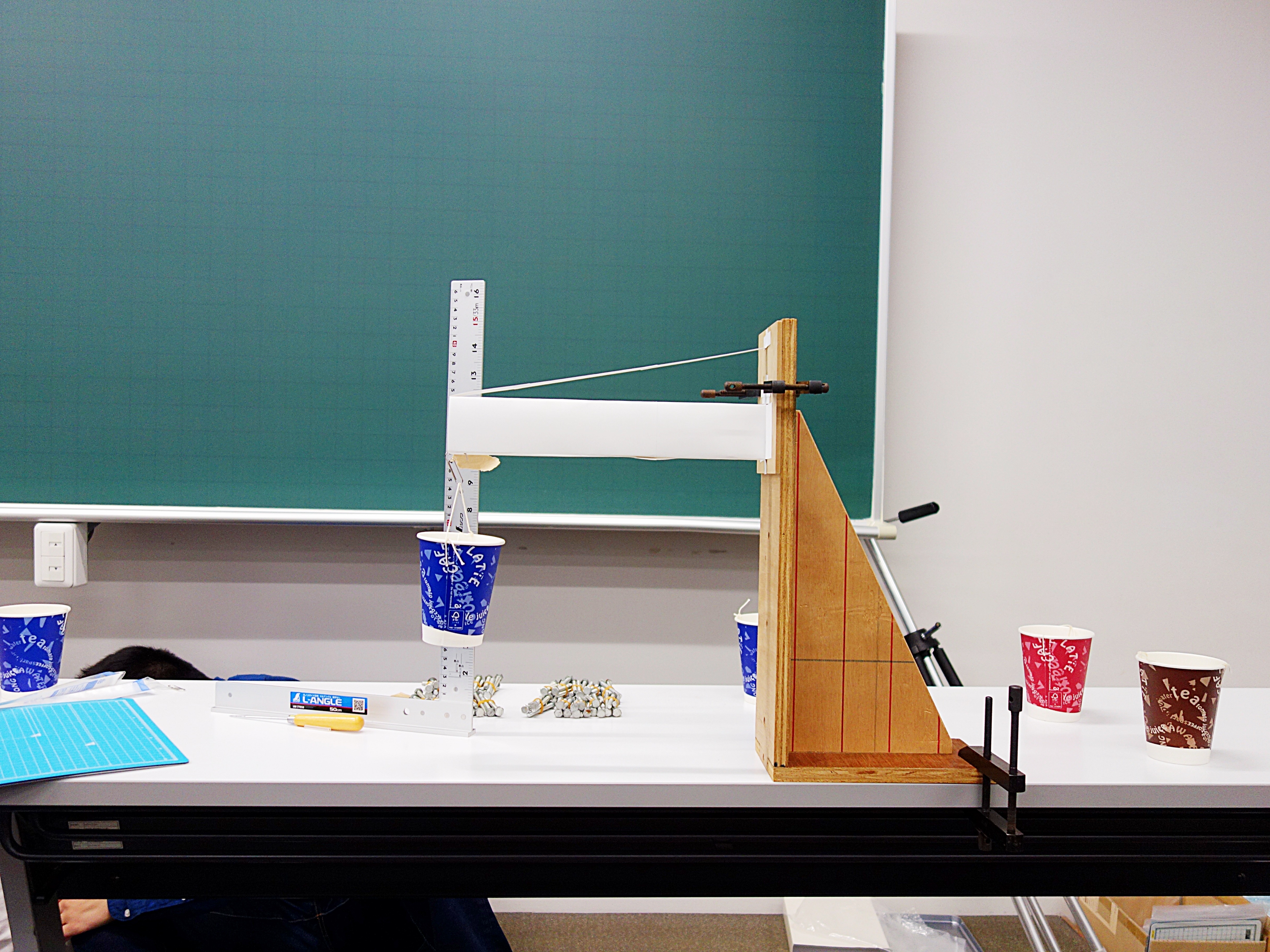First-year students in the Department of Mechanical Engineering compete in a paper beam contest. They are given one A4 sheet of construction paper and a single board. They are allowed to use only glue, scissors, and a ruler to construct a paper beam that extends out from the board. They compete to see whose beam can hold the most weight by suspending a paper cup filled with weights from the end of the beam. Students form teams of five or so members and try to devise a structure capable of bearing even one gram more than the beams of the other teams.
Precisely because they cannot use complex machinery or technology, the contest forces the students to rely on their existing knowledge, ingenuity, and will to come out on top. The contest is a special class held on a single Saturday during the Introduction of Mechanical Engineering B course.
Professor Arai describes the different approaches students take. “Some students try to build exactly what they learned in class and do the calculations, while others approach the challenge based purely on an intuitive sense of what seems to be the strongest. Both are valid ways of tackling the challenge and equally valuable experiences. Since the contest is something of a tradition, some students hear about it from seniors and practice before they come. But when they replicate their design, it often isn’t as strong as they had hoped — lots of interesting things happen. What’s certain is that for students aspiring to become mechanical engineers, the contest sparks an awareness of what it means to be an engineer.”

When asked how the students proceed during the contest, Professor Arai says they are surprisingly quiet at the outset. But after the teams construct their beams in the morning, their excitement builds as the competition ramps up in earnest after lunch.
Professor Arai describes the atmosphere. “After the teams explain what points they focused on in constructing their beams, the real competition begins. The room is full of energy as they cheer each other on. Seeing them leave still buzzing with excitement makes me glad we had the contest.”
He is always surprised by how different each beam the students create is. Many designs are very original, even as they are functionally sound. “The students are serious about the beams they build, but they sometimes try to shape them to look cool or give their beams nicknames. I think they naturally develop an attachment to the structure they’ve made with their own hands.”
Each team brainstorms ideas, talks through alternatives, and builds their beams through trial and error. Every year, a team will come up with a robust beam that sets a new strength record. This experience translates directly to their work in future production settings.

Professor Arai’s specialty is the mechanics of materials. He has spent years developing and evaluating heat-resistant materials used in high-temperature environments, particularly for aircraft and automobile engines. Through his experiences, he has found that knowledge, experience, and original thinking are indispensable for research and development. This is why, on the education side, he emphasizes practical hands-on learning alongside classroom subjects like material mechanics, in order to cultivate the skills required of engineers.
After the contest, students submit reports. In their reports, those who did well verify the factors behind their success, while those who didn’t reflect on what went wrong and how they can improve. In either case, the insights and lessons gained become invaluable resources that cannot be replaced with other learning.
Professor Arai looks forward to the reports each time the contest is held. “Reading about the ingenious approaches students took in making their beams, their insights on what they’d like to try next, and their feedback and words of gratitude about the class is my greatest joy.”
For the students, the day gives them an idea of what they should learn going forward. Above all, the contest is a day where they can again feel the sheer delight of building things.
■ Main research themes